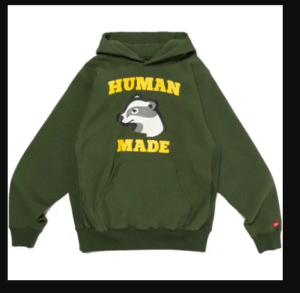Today’s digital users have sky-high expectations. They want speed, clarity, and delight in every click. In this crowded landscape, companies compete not just on features but on how users feel when using a product. That’s where micro-interactions come in. These tiny design elements shape user experiences more than you might think. In fact, they can make or break engagement.
What Are Micro-Interactions?
Micro-interactions are subtle design elements. Think of the slight bounce when you refresh a page. Or the little tick that appears when you complete a task. They don’t scream for attention, but they play a vital role in guiding and rewarding users. These are the unseen heroes of product design.
According to a report by Forrester, 89% of companies believe good UX gives them a competitive edge. Yet only 55% invest in elements like micro-interactions. That’s a huge missed opportunity.
Why Do They Matter So Much?
They provide real-time feedback. When users perform an action—like hitting submit—a micro-interaction assures them it worked. This builds trust.
They guide users intuitively. A smooth transition between pages or a soft vibration on a button tap keeps the experience fluid.
They humanize the product. When interfaces feel responsive and animated, they feel alive. And that builds emotional connection.
Small touches build big loyalty. According to Adobe, 38% of users stop engaging with a site if the layout or interactions feel unattractive. You don’t get a second chance to impress.
Best Practices for Designing Micro-Interactions
Designing them takes more than adding animations. Timing, consistency, and purpose all matter.
Start with user intent. Ask: what does the user expect to happen here?
Keep it short. Micro-interactions should last no more than 400 milliseconds. Anything longer starts to feel sluggish.
Maintain consistency. Animations must feel part of the overall brand. If the tone is playful, your micro-interactions can reflect that. If it’s professional, keep them clean and minimal.
Use them only where needed. Overuse becomes noise. They must enhance, not distract.
Always test with users. Sometimes what feels good in theory annoys real users. Gather feedback early.
Industries Already Using Micro-Interactions Well
E-commerce: Leading platforms like Amazon and Shopify use tiny interactions to show loading states, cart updates, and real-time inventory. This boosts user confidence.
Fintech: Apps like Robinhood use fluid transitions and playful animations to reduce the fear of handling finances.
SaaS Tools: Slack’s subtle animations, from message sent indicators to loading screens, make even long workdays more pleasant.
Gaming: Studios rely on haptic feedback and UI animations to create immersive experiences. These interactions increase engagement and reduce churn.
Even healthcare apps are using micro-interactions to nudge users toward healthier behaviors. It’s powerful when done right.
Why Every “UX UI Design Company” Must Prioritize Micro-Interactions
Not every studio emphasizes these small details. But the “ux ui design company” that does sets itself apart. Why? Because clients increasingly value not just clean layouts, but also how smooth, satisfying, and human their app feels.
Designers who understand micro-interactions create products that feel polished and complete. That’s a competitive edge.
For example, many of the best companies for ui ux designer candidates look for portfolios showing thoughtful micro-interaction design. It tells hiring managers that you understand the full user journey—not just how it looks, but how it behaves.
Micro-interactions are no longer a “nice to have.” They’re essential.
How to Start Using Micro-Interactions Effectively
Begin with high-impact areas. Logins, form submissions, checkouts, and navigation menus are perfect places to start.
Use design systems. Tools like Material Design and Apple’s Human Interface Guidelines already include best practices.
Work closely with developers. These interactions sit at the intersection of design and development. Collaboration is key.
Get feedback from real users. A simple heart animation might charm one group and annoy another. Test and refine constantly.
Measure impact. Track metrics like engagement, bounce rate, and task completion. Small changes can lead to big results.
Real-World Success Stories
Duolingo increased user retention by 12% after introducing progress-based animations and sound effects. These were simple micro-interactions that made users feel like they were leveling up.
Dropbox boosted task success by 17% after adding subtle feedback cues when users uploaded or synced files.
Both companies prove that a small change in design can have major business impact. It’s not just about aesthetics—it’s about results.
The Human Element Behind Micro-Interactions
Good design respects human behavior. Users are emotional. They notice friction. They feel joy when something works seamlessly. Micro-interactions tap into that emotional layer.
Think of them like the “please” and “thank you” in a conversation. They’re polite, responsive, and engaging. Without them, interfaces feel robotic.
Designers who understand human psychology create products that people actually want to use. They empathize. They anticipate needs. That empathy builds loyalty and love for the product.
The Future Is Micro
As digital experiences become more immersive, users expect more. They want interactions that feel effortless. Products that respond to them, guide them, and even surprise them.
Voice assistants, smart watches, and AR experiences all rely heavily on micro-interactions. The future isn’t static—it’s interactive.
Designers must keep evolving. Staying ahead means understanding not just what users do—but how they feel while doing it.
Final Thoughts
Micro-interactions may be small, but they pack a punch. They turn average experiences into delightful ones. They signal that you care about the details. And in today’s competitive digital world, details matter more than ever.
Whether you’re building an app, redesigning a website, or improving a SaaS product—micro-interactions deserve your full attention.
If you’re part of a “ux ui design company,” start investing in this tiny but mighty piece of design. And if you’re a designer aiming to join the best companies for ui ux designer talent, showcase your understanding of these micro-details. It might just be your ticket in.
Loved this post? Share it with your team. Link to it in your next design review. Let’s spread the love for the small touches that make a big impact.
- Why Micro-Interactions Matter: Boosting UX with Tiny Touches
- Discover how micro-interactions transform user experience. Learn why top “ux ui design company” teams prioritize them and how they impact engagement.
- Software development, digital transformation, tav tech solutions
Related posts:
 Why KBH Games Is Perfect for Family-Friendly Online Entertainment
Why KBH Games Is Perfect for Family-Friendly Online Entertainment
 Build a Seamless School Portal with These Powerful Templates
Build a Seamless School Portal with These Powerful Templates
 7 Ways Aerospace Companies Are Using Composites to Elevate Aerial Robotics
7 Ways Aerospace Companies Are Using Composites to Elevate Aerial Robotics
 The Ultimate Web Development Checklist for Building High-Performance Digital Experiences
The Ultimate Web Development Checklist for Building High-Performance Digital Experiences
 10 Local SEO Tips to Boost Your Electronics Repair Shop Online
10 Local SEO Tips to Boost Your Electronics Repair Shop Online
 Optimizing Healthcare Operations in Qatar Through Dynamics 365 Finance and Operations
Optimizing Healthcare Operations in Qatar Through Dynamics 365 Finance and Operations
 How to Hire the Perfect Developer for Your Startup: A Step-by-Step Guide
How to Hire the Perfect Developer for Your Startup: A Step-by-Step Guide
 How Real-Time Monitoring and MES Modernization Are Revolutionizing Manufacturing
How Real-Time Monitoring and MES Modernization Are Revolutionizing Manufacturing







